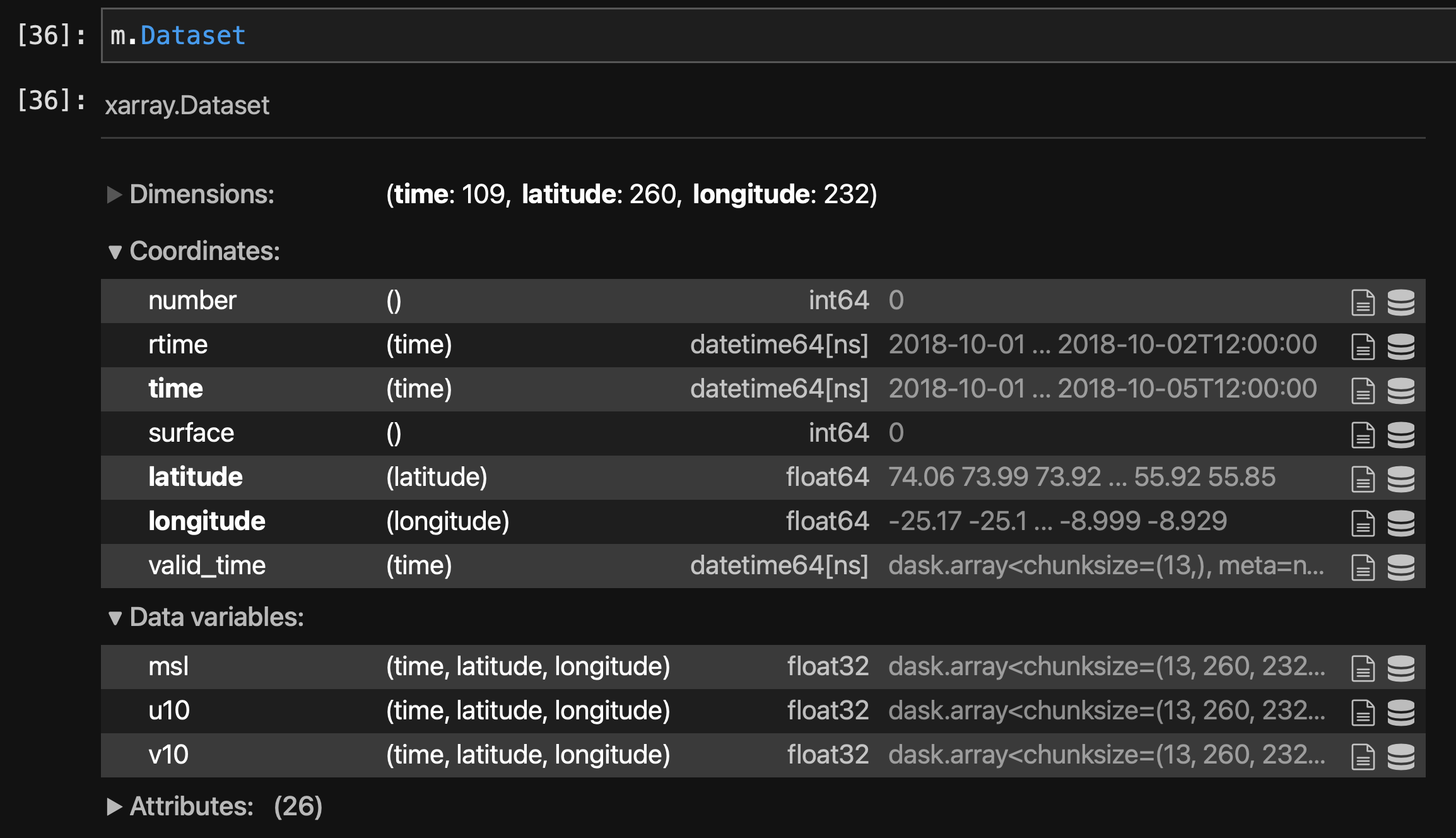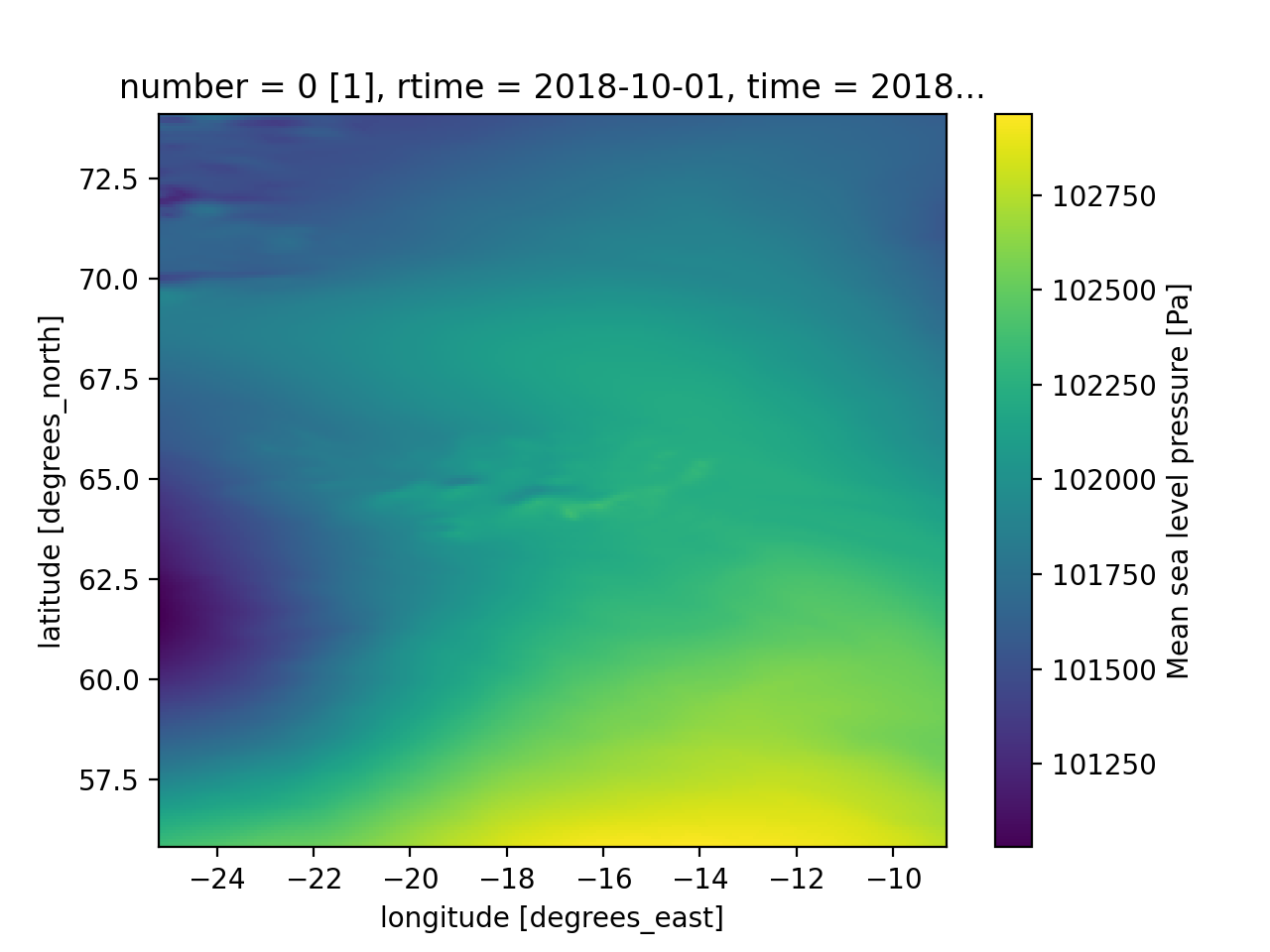Meteo
The meteo module handles the pre-processing of the atmospheric variables used as forcing in the model.
Setup¶
- extent
In most cases, the geometry's extent is a lat/lon box that defines the area of interest. Otherwise the full dataset will be used. This might be problematic in large files e.g. global data especially when the file is retrieved from a url (see below).
Without loss of generality we select below Iceland as a test case.
# define in a dictionary the properties of the model..
extend = {
"lon_min": -25.0, # lat/lon window
"lon_max": -9.0,
"lat_min": 56.0,
"lat_max": 74.0,
}
- source
The Meteo class supports all the functionality of xarray. Thus the meteo_source argument can be:
Local file (or list of files) :¶
This could easily be defined as e.g.
source = '/path/to/meteo.grib'
source = ['/path/to/meteo0.grib', '/path/to/meteo1.grib']
A number of formats are supported, namely geotiff, grib, netcdf, zarr, etc.
URL¶
This usually means a link to an opendap/erddap server (supported through pydap). As an example, assuming that the source is the GFS data from NOAA, the link can be defined as:
import pandas as pd
import numpy as np
start_date = pd.to_datetime("today") - pd.DateOffset(
days=1
) # step back one day for availability.
r = [0, 6, 12, 18] # define a specific release
h = np.argmin(
[n for n in [start_date.hour - x for x in r] if n > 0]
) # find the latest available
url = (
"https://nomads.ncep.noaa.gov/dods/gfs_0p25_1hr/gfs{}/gfs_0p25_1hr_{:0>2d}z".format(
start_date.strftime("%Y%m%d"), r[h]
)
)
source = url
Note
This option would work only for small extents. For large areas (continental/global) using a previously locally stored file is advised.
Retrieve meteo Dataset¶
We can combine the info into a dictionary as
dic = {"geometry":extend, "meteo_source":source}
and retrieve the Dataset with
import pyposeidon.meteo as pm
m = pm.Meteo(**dic)

Note
xarray is using dask for a lazy read and all data will be loaded into memory when needed.
Visualisation is readily available through the plot accessor of xarray, e.g.
m.Dataset.msl[0,:,:].plot() # A 2D graph for one timestep

Output to file¶
Once the dataset is produced, it can be saved to files appropriate for the selected solver, e.g:
m.Dataset.to_netcdf('./test/test.nc') # generic netCDF output
m.to_output(solver_name='d3d',rpath='./test/') # to u,v,p for D3D
m.to_output(solver_name='schism',rpath='./test/') # save to SCHISM hgrid format
m.to_output(solver_name='schism',rpath='./test/', meteo_split_by='day') # split into more files
m.to_output(solver_name='schism',rpath='./test/', m_index=2) # Define index for meteo (for SCHISM)